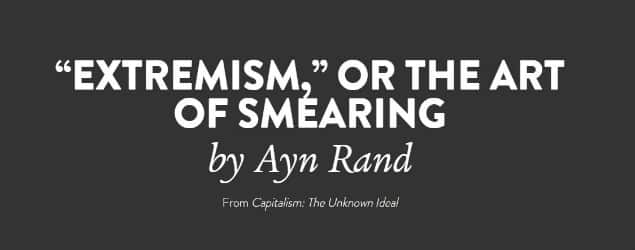What’s Behind the Blacklisting of Anti-Muslim “Extremists”

When I first heard about the “Field Guide to Anti-Muslim Extremists,” I had grave misgivings: the freighted title, by itself, rang in my ears like a siren. Turns out, the “Field Guide” was worse than I thought. The purpose of the “Field Guide,” compiled by the (once reputable) Southern Poverty Law Center, is to steer journalists away from fifteen writers, thinkers, and commentators who are lumped together as “extremists.” It’s a blacklist. Anyone on it should be seen as beyond the pale, or worse, and therefore ignored. SPLC’s “Field Guide” is an appalling document, and I discussed it at length when I was the guest host on the Yaron Brook Show recently.
On the radio show I point out that this “Field Guide,” in its approach and purposes, is a case study of a phenomenon that Ayn Rand identified in her essay, “ ‘Extremism’, or The Art of Smearing.” What prompted her essay was the surfacing of the term “extremism” at the Republican National Convention more than fifty years ago, but her fundamental insight is timelessly relevant. On the show, I discussed Rand’s essay, indicating her view, and used that context to explore the “Field Guide.” That document seeks to smear, and thus silence, much needed, reasonable critics of the Islamist movement, such as Ayaan Hirsi Ali, by putting them alongside bigots and racists. Along with Ayaan Hirsi Ali, there are other thinkers and writers whose inclusion on the blacklist is a gross injustice.
Let me add that if you have yet to read Rand’s analysis of “extremism,” you can learn a lot from it. The lessons she draws have far-reaching applications. Her analysis exposes the crucial role of philosophy in human life and thought — in particular, the necessity of adopting a rational theory of knowledge, or epistemology. And her methodology can guide us in becoming better at thinking and living.
Go read her essay now. Come back later to listen to the show.
(Courtesy The Times of Israel)



